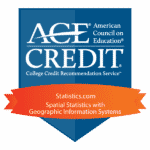In this week’s Brief, the second in our series on statistical thinking, we discuss WWII convoys; our course spotlight is
- July 10 – Aug 7: Spatial Statistics for GIS Using R
See you in class!
Peter Bruce
Founder, Author, and Senior Scientist
Statistical Thinking 2
Safety in Numbers – Calculating Probabilities for Convoys
Early 1942 was a critical period for the Allies in WWII. Russia was on its heels, with German armies at the gates of Moscow and preparing an offensive in southern Russia. Alone among the Allies in its ability to inflict major casualties on Germany, Russia depended in part on Atlantic/Arctic convoys for supplies. Astute assessment of the probabilities involved in convoy operations […]
Historical Spotlight
Military Operations
World War II bomber pilots had a short life expectancy – just under half the British pilots were killed in action. Seeking to reinforce aircraft to improve survivability, the US Army Air Forces consulted Prof. Abraham Wald at the Statistical Research Group in New York (attached to Columbia University). Prof. Wald’s surprising advice was [… ]
Word of the Week
Polytomous
Polytomous, applied to variables (usually outcome variables), means multi-category (i.e. more than two categories). Synonym: multinomial.
Digital Badges
Digital badges provide employers and peers concrete evidence of what you have learned and the skills required to earn your credential. Each badge’s digital image holds verified metadata describing your qualifications and the mastery required to earn them.
Contact Us To Learn More
If you have any questions on our courses, certificates, and degree programs and how they can apply to you, your work, and to your career, please get in touch. We’re here to help you succeed.

